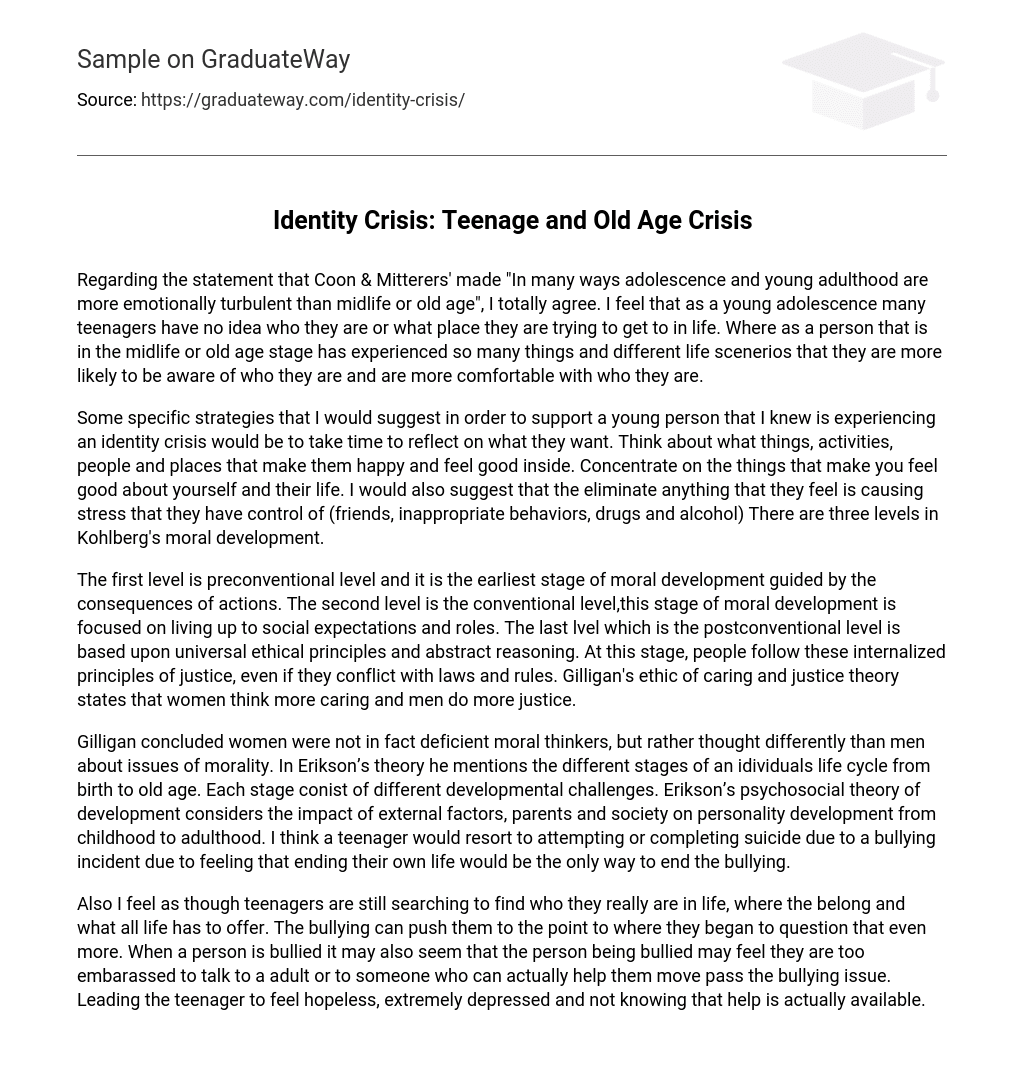Regarding the statement that Coon & Mitterers’ made “In many ways adolescence and young adulthood are more emotionally turbulent than midlife or old age”, I completely agree. I believe that as a young adolescent, many teenagers lack a sense of identity and direction in life. On the other hand, individuals in the midlife or old age stage have encountered numerous life experiences and various scenarios, which makes them more likely to possess self-awareness and feel comfortable with themselves.
When assisting a young individual experiencing an identity crisis, it is crucial to promote self-examination. They ought to reflect on the elements, pursuits, individuals, and locations that bring them joy and inner satisfaction. Prioritizing what instills positivity about themselves and their existence is essential. Furthermore, it is advisable for them to remove any controllable stressors like detrimental friendships, inappropriate actions, or substance misuse. Kohlberg’s moral development theory encompasses three levels.
The first level of moral development is called the preconventional level. In this stage, individuals are guided by the consequences of their actions.
The second level is known as the conventional level. It is focused on meeting social expectations and fulfilling roles.
The final level, referred to as the postconventional level, is based on universal ethical principles and abstract reasoning. People at this stage follow internalized principles of justice, even if they conflict with laws and rules.
According to Gilligan’s ethic of caring and justice theory, women are more inclined towards caring while men tend to prioritize justice.
According to Gilligan, women have a distinct perspective on moral thinking compared to men. They possess moral abilities but hold different thoughts on moral issues. Meanwhile, Erikson’s theory covers the different stages of an individual’s life cycle, which include infancy to old age. Each stage presents specific developmental challenges. Erikson’s psychosocial theory highlights the impact of external factors, like parents and society, on personality development from childhood to adulthood. If faced with bullying, a teenager may turn to or achieve suicide as they perceive ending their own life as the sole means of escaping from the bullying.
Moreover, teenagers frequently seek to find their authentic identities, purpose in society, and the countless opportunities life offers. Yet, bullying can heighten their doubts. Those who experience bullying may feel too embarrassed to share their struggles with a responsible adult or someone who can offer effective help. This amplifies feelings of despair and profound sadness, all while being unaware that assistance is actually within reach.





